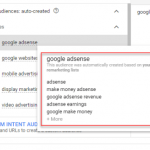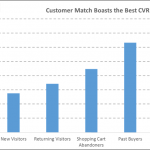Heads Up: Google Mobile-First Index Rolls Out For ‘Handful Of Sites’
Heads Up: Google Mobile-First Index Rolls Out For ‘Handful Of Sites’
by Laurie Sullivan @lauriesullivan, (December 18, 2017)
Google has rolled out the mobile-first index to a “handful of sites” and the search team is “closely” monitoring those websites in preparation to add more, Gary Illyes, house elf and chief of sunshine and happiness at Google, as he refers to himself on Twitter, confirmed in a blog post on Monday.
“We will be evaluating sites independently on their readiness for mobile-first indexing based on the above criteria and transitioning them when ready,” he wrote. “This process has already started for a handful of sites and is closely being monitored by the search team.”

Today, for the most part, Google crawls, indexes, and ranks systems based on the desktop version of a page’s content, which may cause issues for people searching on mobile devices.
With the increase in people moving to mobile as their preferred search tool, Google will soon use the mobile version of the content for indexing and ranking to assist mobile users in finding what they seek.
“Webmasters will see significantly increased crawling by Smartphone Googlebot, and the snippets in the results, as well as the content on the Google cache pages, will be from the mobile version of the pages,” Illyes writes.
Websites that use responsive web design and correctly implement dynamic serving generally don’t have to do anything, but Illyes also included tips to ensure that a website is ready for mobile-first indexing.
Illyes suggests that companies use high-quality content, from text to images and videos, and that they appear in crawlable and indexable formats. Companies should use structured data for indexing and search features for both mobile and desktop version of the site and ensure that URLs within the structured data are updated to the mobile version on the mobile pages.
Metadata should be present on both versions of the site because it provides hints about the content on a page for indexing and serving.
Illyes writes that no changes are necessary for interlinking with separate mobile URLs (m.-dot sites). And for sites using separate mobile URLs, keep the existing link rel=canonical and link rel=alternate elements between these versions. More tips can be found here.
MediaPost.com: Search Marketing Daily
(45)













